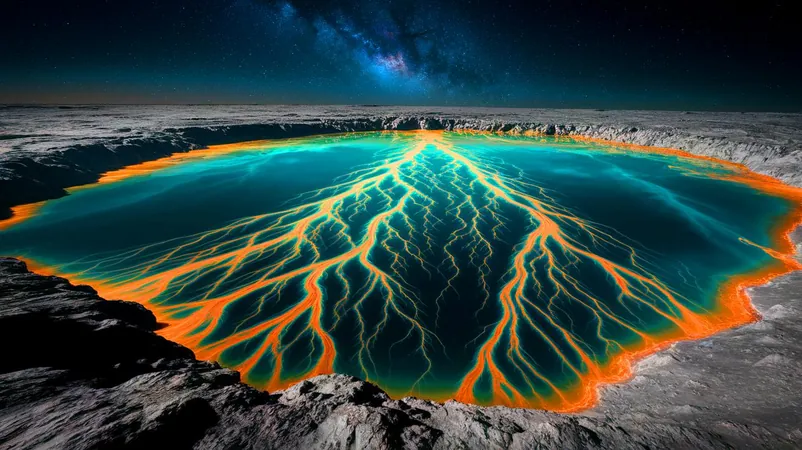
Stunning Revelation: Titan's Rivers Mystify Scientists by Dissolving into Deep Pits Rather Than Expected Deltas
2025-04-26
Author: Michael
Titan's Surprising Terrain
Saturn's largest moon, Titan, has captivated scientists with its uncanny resemblance to Earth, exhibiting rivers, lakes, and seas. A groundbreaking study, however, has unveiled a shocking twist: the anticipated deltas, typically formed where rivers meet larger bodies of water, are conspicuously absent. This finding not only challenges our grasp of Titan's geological processes but also raises intriguing questions about the moon’s geological history and its potential for harboring life.
A Moon Like No Other
Titan boasts a thick atmosphere laden with nitrogen and methane, creating a landscape that, while reminiscent of Earth, presents stark variations. Instead of water, its rivers and seas consist of liquid methane and ethane, thanks to the moon's freezing temperatures, crafting an environment where hydrocarbons reign supreme. This peculiar configuration leads to extraordinary geological structures that are unlike anything found on Earth.
A Major Geomorphological Puzzle
The absence of deltas on Titan is particularly puzzling. On Earth, deltas are rich in sediment and serve as historical archives of climatic and geological changes. Researchers, led by Sam Birch from Brown University, had anticipated that Titan would show similar features, making the lack of deltas a significant anomaly. Birch expressed his disappointment, stating, “As a geomorphologist, it’s disappointing because deltas should hold so much of Titan’s history.” Nevertheless, the moon’s complex climate—complete with its own version of clouds, wind, and rain—continues to inspire awe.
Bringing Earth Models to Titan
NASA's Cassini spacecraft initially detected liquid methane on Titan using synthetic aperture radar (SAR), revealing vast channels and flat expanses. However, determining the landscape’s features proved challenging due to the transparency of shallow methane. To overcome this, Birch’s team developed a computer model to simulate how Cassini’s observations would look on Earth, substituting methane for water. This novel approach helped create clearer synthetic images and unveiled unexpected deep pits and channels, adding another layer of complexity to Titan's already fascinating geology.
New Frontiers in Planetary Geology
The discovery of deep pits rather than deltas indicates Titan’s geomorphological processes are far more intricate than previously assumed. These findings push scientists to reconsider established models of planetary evolution. The intriguing channels and pits hint at previously unknown geological dynamics at play, leading to new avenues for exploration. Understanding Titan could also unlock insights applicable to other celestial bodies, enriching our knowledge of planetary formation and expanding our concept of habitability beyond Earth.
What Lies Ahead for Titan Exploration?
As we continue to probe Titan's mysterious surface, every revelation ignites further inquiry. What other enigmas does this distant moon conceal? The answers could redefine not only our comprehension of Titan but also our place in the cosmic tapestry.









 Brasil (PT)
Brasil (PT)
 Canada (EN)
Canada (EN)
 Chile (ES)
Chile (ES)
 Česko (CS)
Česko (CS)
 대한민국 (KO)
대한민국 (KO)
 España (ES)
España (ES)
 France (FR)
France (FR)
 Hong Kong (EN)
Hong Kong (EN)
 Italia (IT)
Italia (IT)
 日本 (JA)
日本 (JA)
 Magyarország (HU)
Magyarország (HU)
 Norge (NO)
Norge (NO)
 Polska (PL)
Polska (PL)
 Schweiz (DE)
Schweiz (DE)
 Singapore (EN)
Singapore (EN)
 Sverige (SV)
Sverige (SV)
 Suomi (FI)
Suomi (FI)
 Türkiye (TR)
Türkiye (TR)
 الإمارات العربية المتحدة (AR)
الإمارات العربية المتحدة (AR)